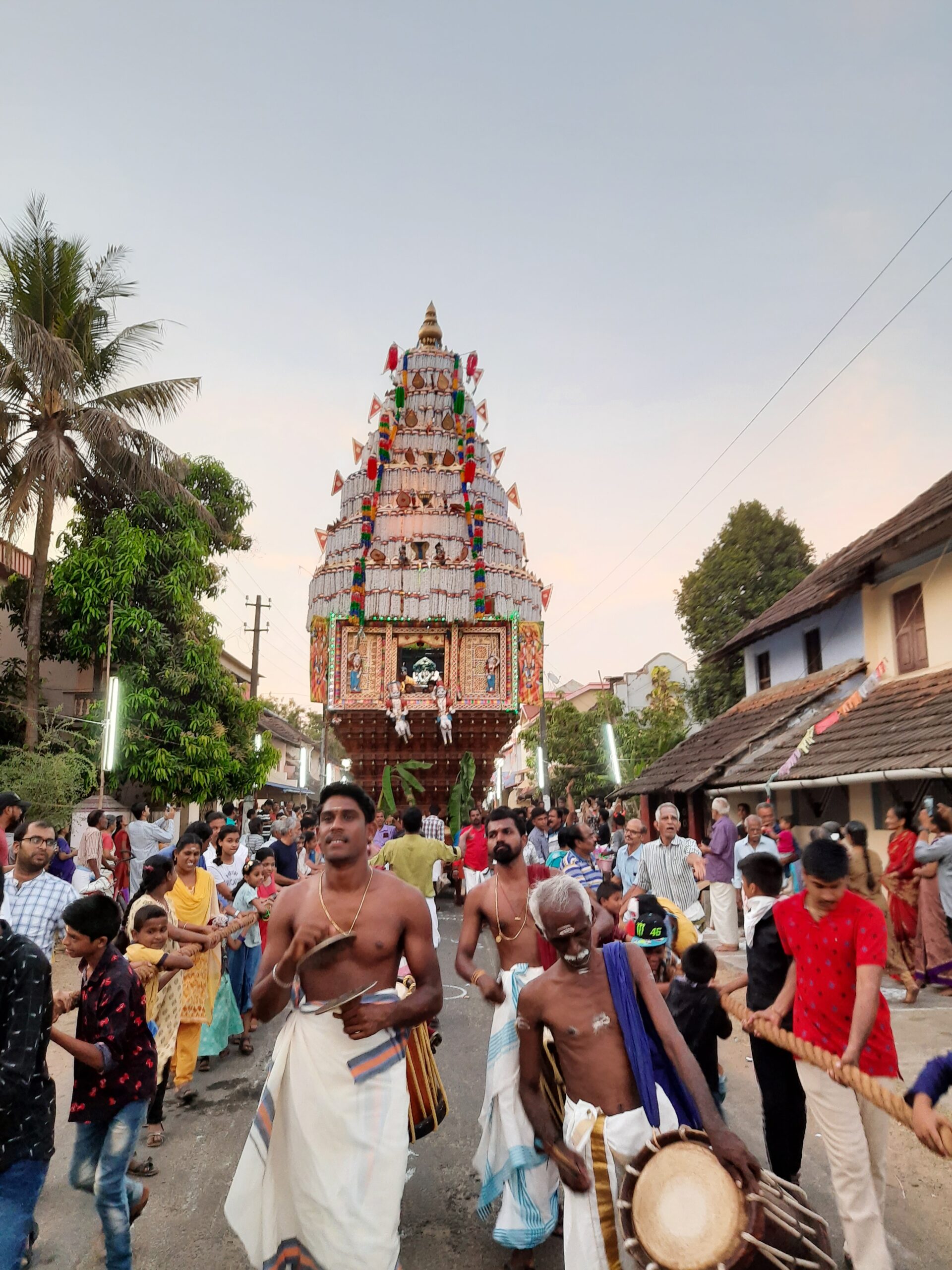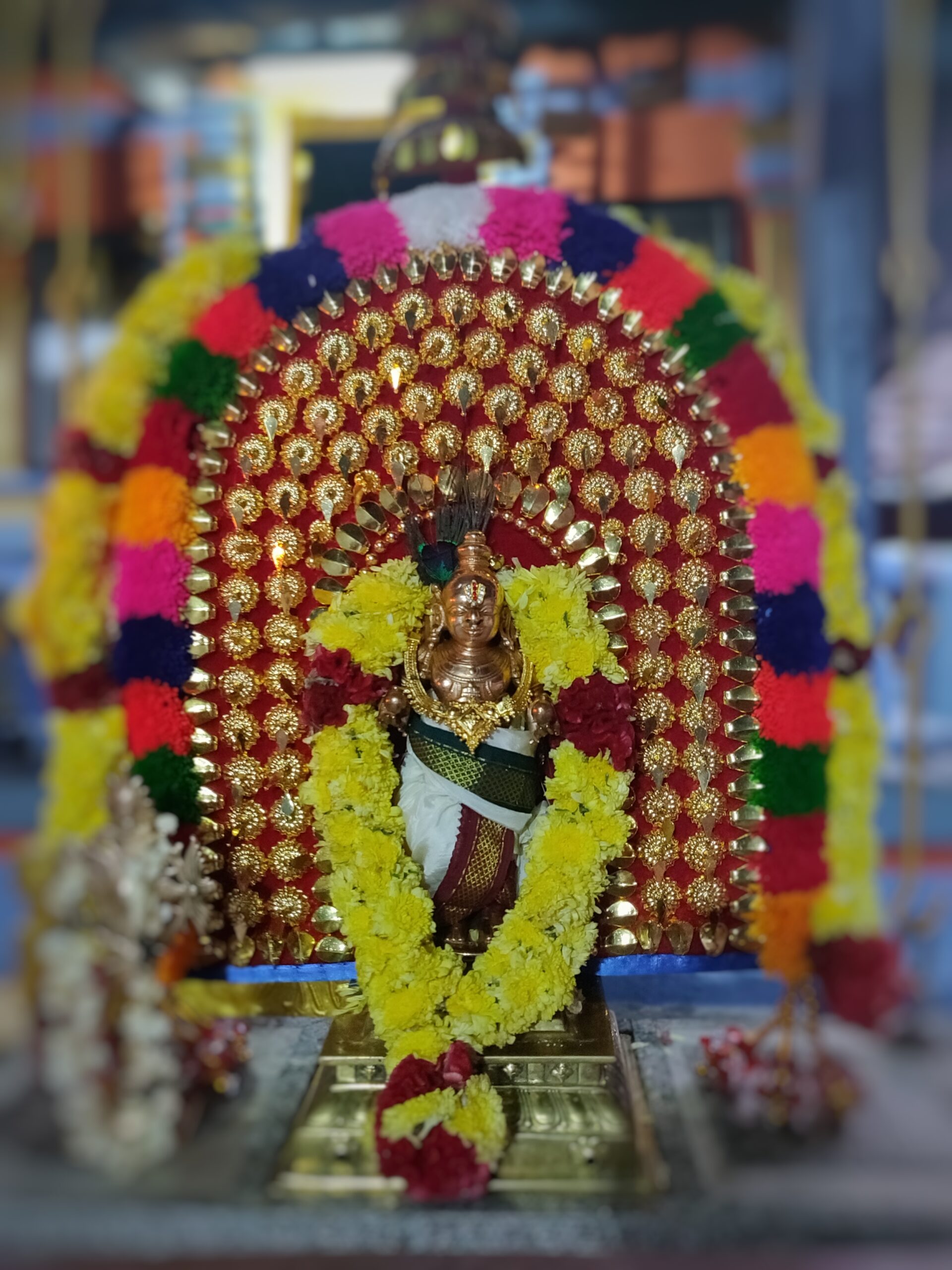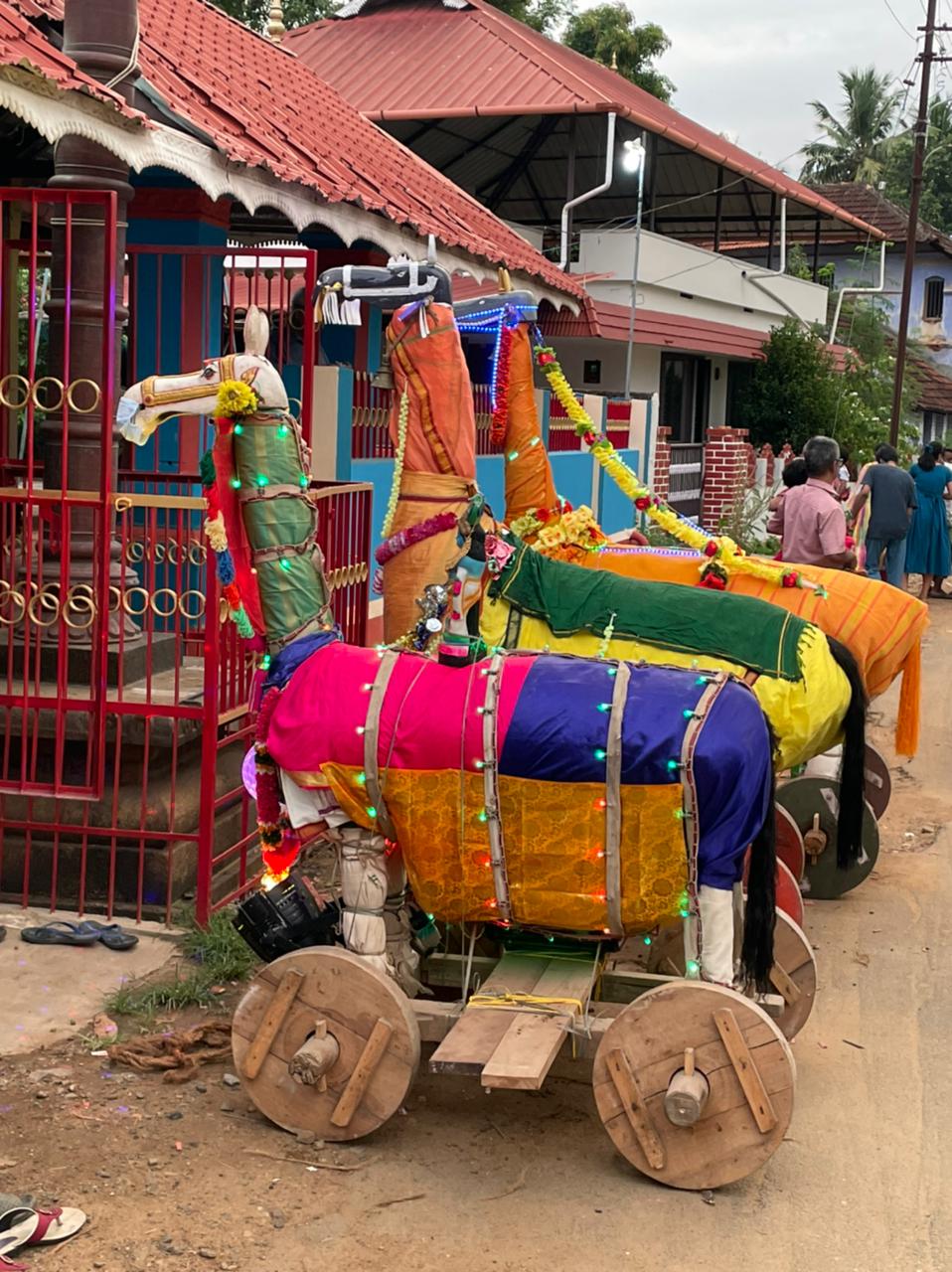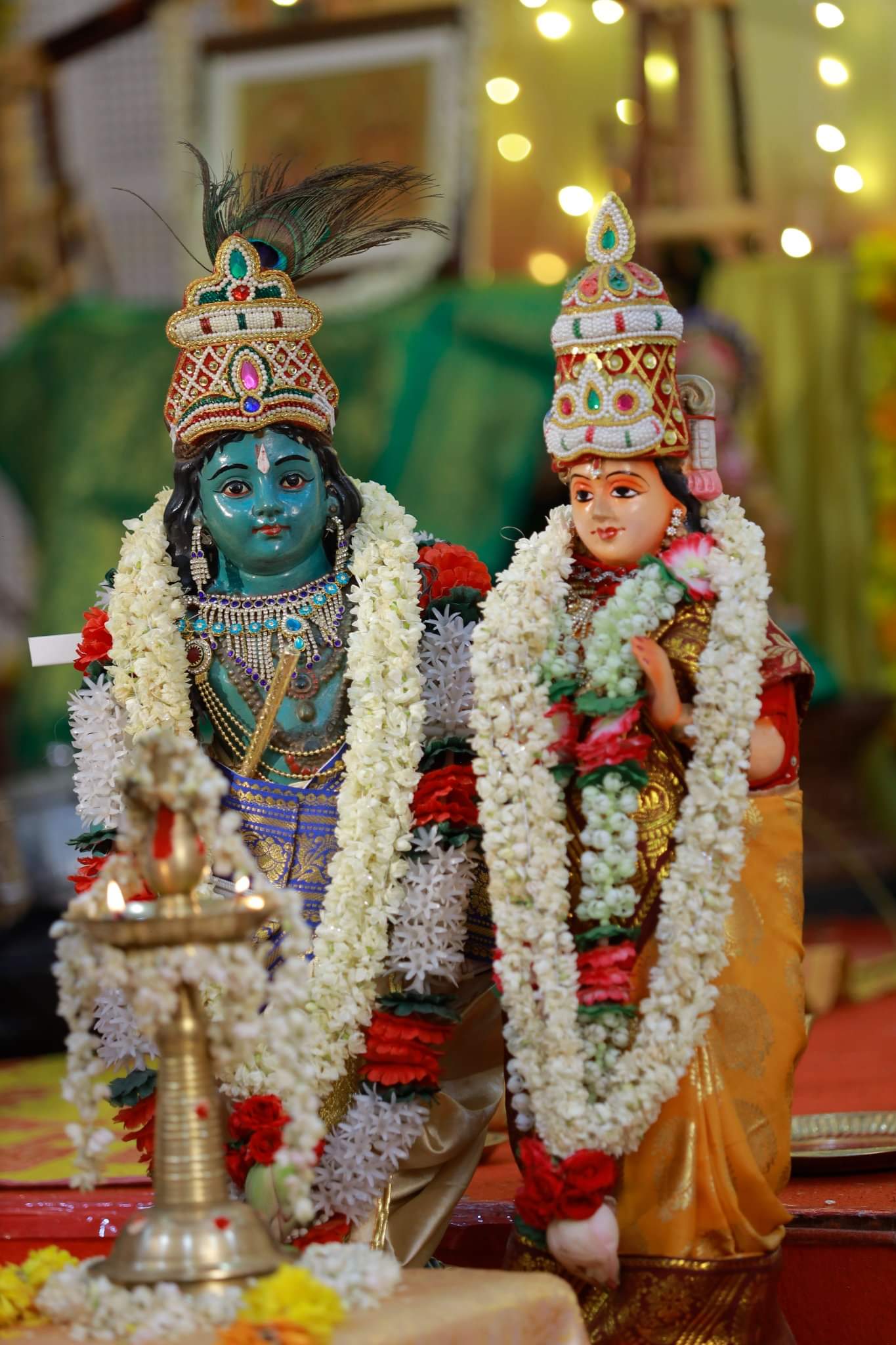Festivals
This temple is more concentrated in the Vedic and ritualistic functions performed by great Vedic scholars. The main festival are Ratholsavam,Sree Krishna Jayanthi,Vishu Vela,Nira Puthari,Vaikunda Ekadashi etc…
Festivals are always a stage of reunion and togetherness among those who celebrate and enjoy the resonance of transcendental experience. Festive seasons resound egalitarian effervescence and people gather for its collective participation. Temples are the epicenter of traditional festivals and its progressions through generations. The major festivals being conducted at the temple are;

Ratholsavam ( Car Festival)

Prathishta Dinam
Prathishta Dinam means the day when the last Kumbhabhishekam is conducted, prathishta of deity was done. In the case of Sree Navanetha Gopalakrishna Swamy temple, Perinkulam it falls on Anuradha Nakshathram of Mithuna Masam. This changes as every 12 years when the Kumbabhishekam will be performed. On prathishta Dinam, Poorna Kalabhabhishekam is performed along with Parayana of Veda Sookthas.
Kumbha-abhishekam is a purification ceremony to sanctify and energize the temple structures and the Deities. Kumbahabhishekam is a part of the consecration ceremony in a Temple. 5 out of 64 upacharas in Agama Sastra are most important, which are Padyam/Gandham/Pushpam/Dhoopam/Deepam. Out of this 5 Padyam (offer of Water) is important and this is why during Kumbhabhishekam, water contained Kalashams are first sanctified with vedic prayers after which is used for Abhishekam for Deities and other structures. The Kalasha on top of the temple after the ceremony is “Nirguna Brahmam” and Diety inside the sanctum sanctorum is “Saguna Brahmam”. We must worship the “Saguna Brahmam” – The Deity inside the Temple – In order to attain the formless “Nirguna Brahmam”. Kumbhabhishekam is performed normally every 12 years during which the temple will undergo major repair works and consecrate with a variety of Vedic Rituals.

Vishu Vela
Vishu day is an auspicious day celebrated across the country in different names. In Kerala, the first day of Medam (14th or 15th of April) is celebrated as Vishu. Vishu is celebrated auspiciously at Sree Navaneetha Gopalakrishna Swamy Temple. A grand and beautiful “Vishukkani” is arranged in front of the diety and the priest offers “kaineettam” for all the worshippers who visit the temple on that day.The procession of “Vishu Kuthira” – a horse made up of dried stems and cloth – is the peculiarity of Vishu festival at Perinkulam. On the Vishu day evening, the Horses from all the three temples assemble in front of the Visalakshi Sametha Visweswara Swamy Temple and grand fireworks follow it.The reading of Vishu Panjangam (a calendar describing the astrological effects of upcoming year) is a peculiar event of the Vishu Celebration at Perinkulam. After the fireworks and deeparadhana, the Vishu Kuthira procession takes place throughout the villages and subsequently “Vishu kanji” is served at temple.

Janmashtami (Sree Krishna Jayanthi)
Krishna Janmashtami, also known as Janmashtami or Gokulashtami, is an annual Hindu festival that celebrates the birth of Lord Krishna. According to the Hindu lunisolar calendar, it is observed on the eighth tithi (Ashtami) of the Krishna Paksha (dark fortnight) in Bhadrapada Masa. This overlaps with August or September of the Gregorian calendar. Janmashtami day is celebrated at Perinkulam Sree Navaneetha Gopalakrishna Swamy Temple with rituals like Kalabhabhishekam and Uriyadi is being conducted in the evening of the day which is the main attraction of the festival.

Vaikunda Ekadashi
According to the Vishnu Purana, fasting on Vaikunta Ekadashi is equivalent to fasting on the remaining 23 Ekadashis of the (Hindu) year. It coincides with Mokṣadā Ekādaśī or Putrada Ekādaśī. It is observed on the 11th lunar day of the waxing lunar fortnight of the solar month of Dhanu. This falls between 16 December and 13 January in the English calendar. It is believed that ‘Vaikunta Dwaram’ or ‘the gate to the Lord’s Inner Sanctum’ is opened on this day. This auspicious day is observed with various rituals including Laksharchana and Vedaparayana.

Illam Nira ( Nira Puthari)
Illam Nira ceremony in Kerala is associated with harvest and it is a tribute to the nature. It is celebrated in Kerala temples during the month of Karkidakam (June-July) every year. Perinkulam Krishna Temple celebrates it during Thiruvonam day of chingam masam(Onam – The national festival of Kerala). For Illam Nira, newly reaped paddy spikes are brought into the temple and on the next day special pujas are performed on the paddy spikes. ‘Illam Nira’ symbolically represents a very good harvest season in which the house is filled with rice for the next season. In this ritual the paddy spikes are used to prepare ‘Puthari Nivedyam’ and ‘Puthari Payasam’ – the rice offering to the deity with newly reaped rice. The remaining paddy spikes are distributed to the devotees who take it to their homes and hung in the rooms with lot of fanfare.

